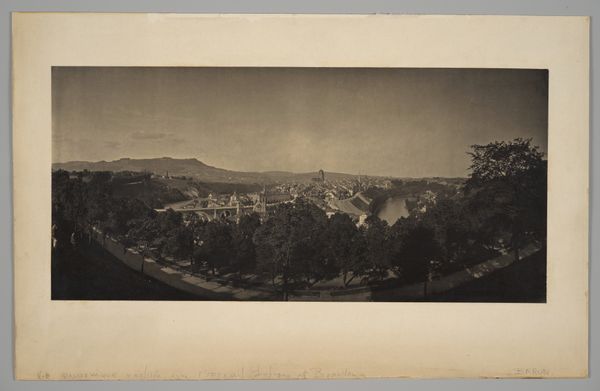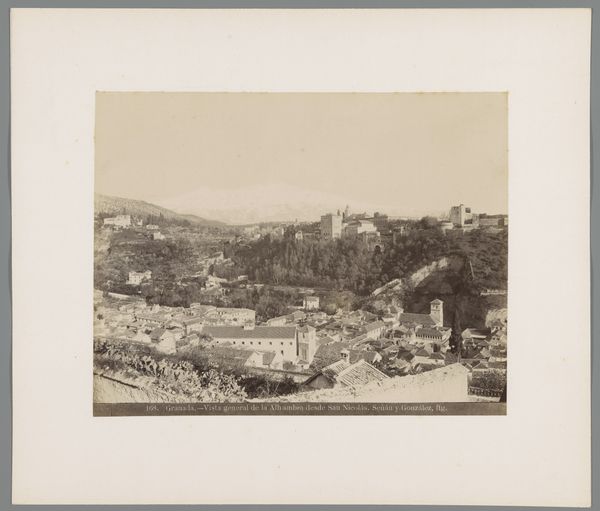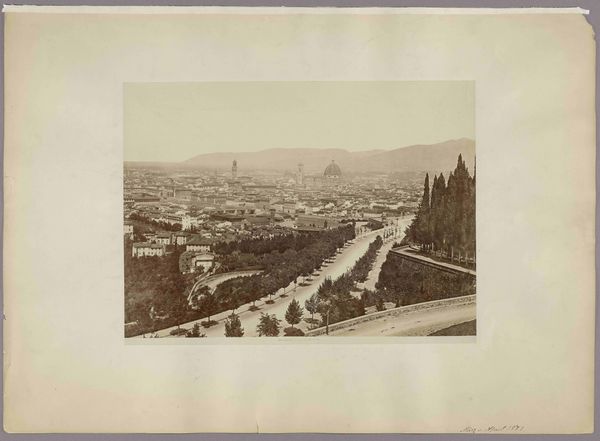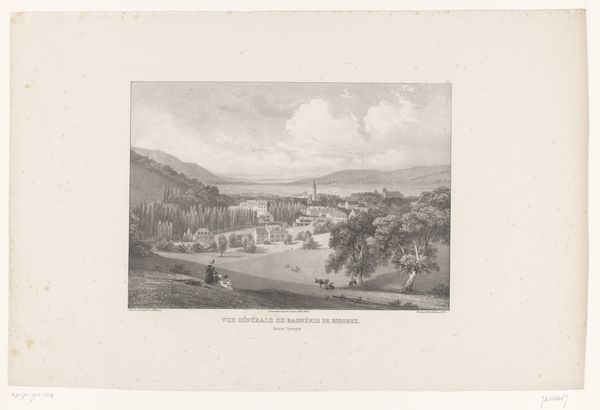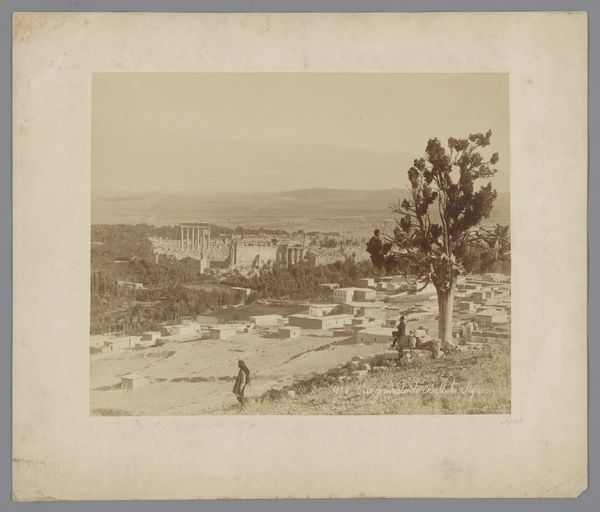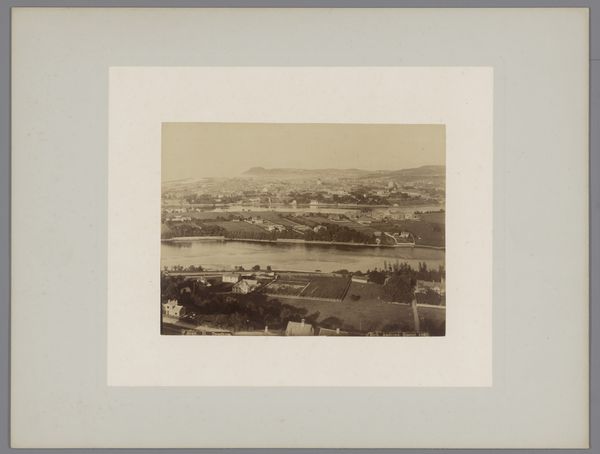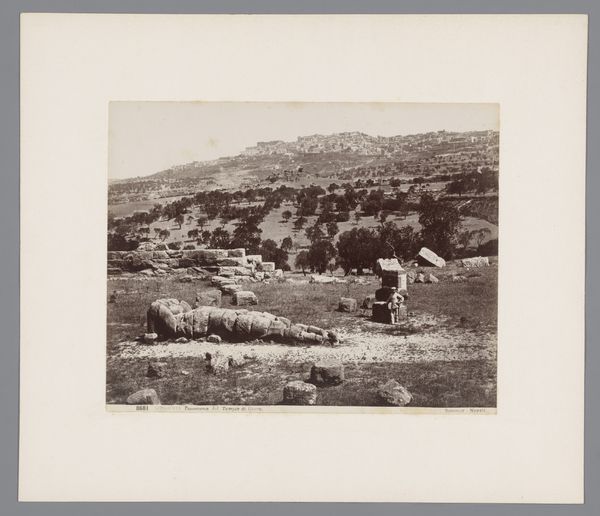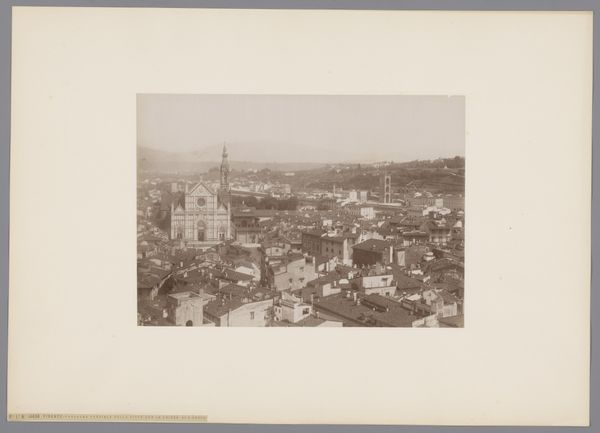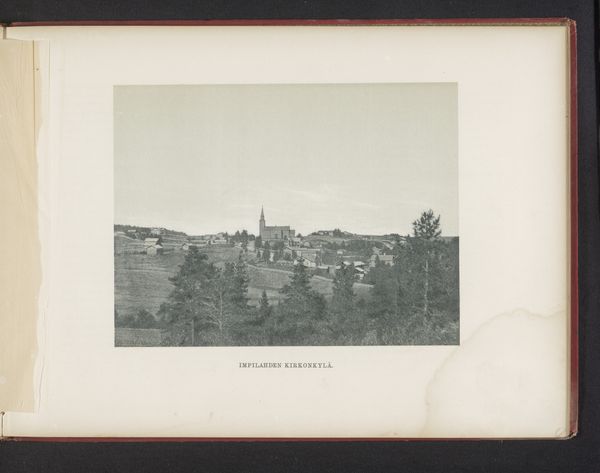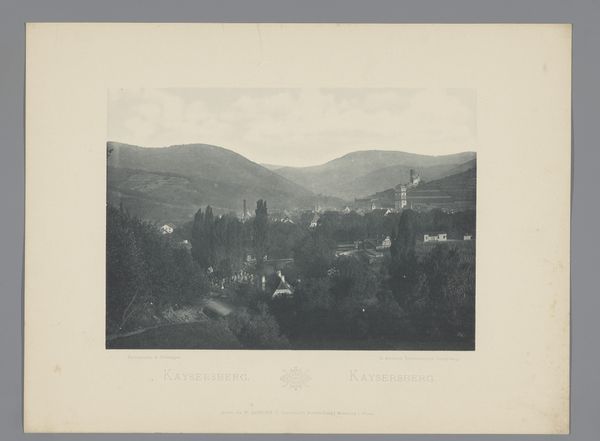
print, photography
# print
#
landscape
#
photography
#
cityscape
#
realism
Dimensions: height 145 mm, width 183 mm, height 245 mm, width 330 mm
Copyright: Rijks Museum: Open Domain
Editor: This is "Gezicht op Christiania," a photograph taken in 1881 by Olaf Martin Peder Væring. It's a beautiful cityscape, rendered in muted tones, creating a sense of serene distance. What do you see in this image, from a formalist perspective? Curator: The immediate draw is the meticulous rendering of light and shadow. Consider how the artist harnesses tonal gradations, moving from the foreground's darkened foliage towards the shimmering horizon. This creates a perspectival recession, structured not through linear means alone, but also through careful manipulation of light. Do you notice the orthogonals in the built environment? Editor: Yes, the lines of the buildings definitely create a sense of depth, and the repetition of forms, especially the roofs, is quite striking. Is there any philosophical underpinning to viewing art this way? Curator: Indeed. Structuralism provides a rich framework for analyzing this work. Each element--the buildings, the trees, the sky--can be seen as a signifier within a larger system. The photograph gains meaning through the relationships between these signs and their formal arrangement, largely divorced from their historical context. We might view this not as Christiania, but as a study of architectural geometries within a carefully calibrated spectrum of light. Editor: So it's about understanding the internal language of the image? Curator: Precisely. And the strength lies in the coherence of that language. This understanding enriches the experience of it. Editor: I hadn't considered stripping away the context like that, it highlights the construction of the image itself, giving primacy to the formal elements. Curator: Indeed. Art making meaning through arrangement.
Comments
No comments
Be the first to comment and join the conversation on the ultimate creative platform.

